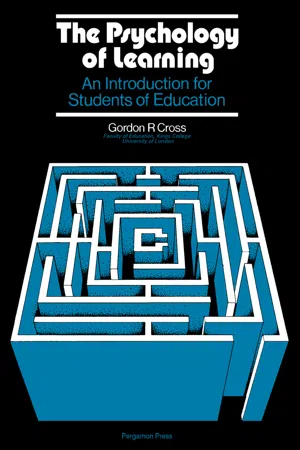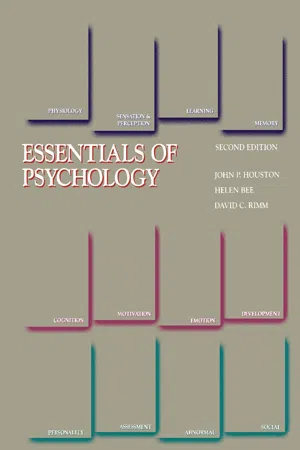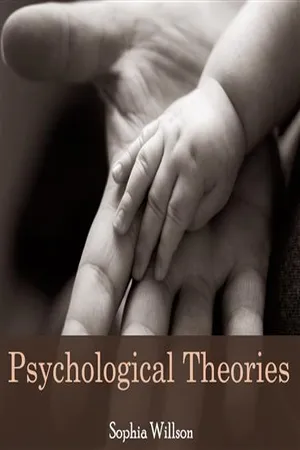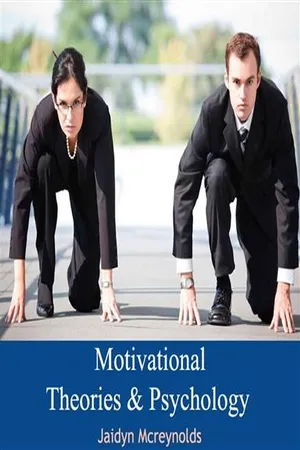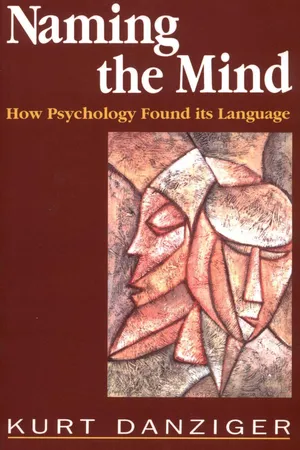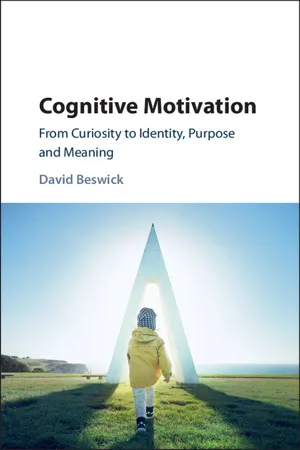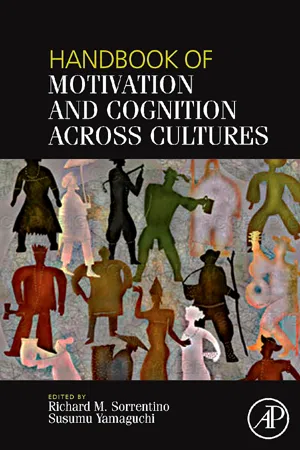Psychology
Concept of Motivation
Motivation refers to the driving force behind an individual's actions, desires, and needs. It involves the internal and external factors that stimulate the initiation, direction, intensity, and persistence of behavior. Motivation can be influenced by biological, psychological, and social factors, and plays a crucial role in shaping human behavior and achievement.
Written by Perlego with AI-assistance
Related key terms
1 of 5
12 Key excerpts on "Concept of Motivation"
- eBook - PDF
The Psychology of Learning
An Introduction for Students of Education
- Gordon R. Cross, Edmund King(Authors)
- 2016(Publication Date)
- Pergamon(Publisher)
CHAPTER 4 Motivation Concept of Motivation Some aspects of motivation have already been discussed directly or by implication in the study of learning theories ; this was inevitable as learning and motivation are inextricably linked, indeed many claim that motivation is the heart of the learning process. If learning is defined as a permanent change in behaviour as a result of experience, then motivation is the study of the activation or arousal of behaviour, its strength and direction. The vocabulary of the subject is expansive and continues to grow at a pace faster than an acceptable understanding of its complex nature ; it is a splendid example of a polymorphous concept with a diversity of interpretation and classification. Adjectives like drive, need, goal, urge, impulse, set and incentive commonly occur in the language of psychology to describe basic motives. In the classroom the more readily observed surface motives are generally referred to as attitudes, interests, rewards, reproof, curiosity, status, anxiety to please and so forth. This immediately raises the problem as to whether it is necessary or worth while to attempt a classification of human motives ; for example, to differentiate between general and specific motives. Many behaviourists would argue that basic biological needs such as food for the survival of the organism or sex for the survival of the species are the mainsprings of activity. Need results from deprivation; whether it is a natural need as in the case offood by a hungry person, or an acquired need— for example, alcohol or drugs by an addict. The search for food or activity as a consequence of need is called drive. For the practical teacher the concept of need reduction and drive is too primitive and too distant from the everyday behaviour of children in the classroom where individual needs are subtle, complex and quite often completely hidden and disguised. An hierarchical structure of needs says 66 - Elena Simperl, Roberta Cuel, Martin Stein(Authors)
- 2022(Publication Date)
- Springer(Publisher)
In order to shed some light on these topics, the Concept of Motivation and the antecedent factors that may influence the willingness of participants to contribute will be described. 2.2 DEFINING MOTIVATION According to the Oxford dictionary, a motivation is a reason for acting or behaving in a particular way; namely, it is a desire, an enthusiasm, or willingness to do something. The Concept of Motivation was coined in the late 19th century but it derives from late Latin “motivus” or “movere” which means “to move,” push, or influence in order to proceed in the fulfillment of a want. In economics and psychology, motivation is considered as power that strengthens, gives direc- tion, and triggers the tendency to continue a specific behavior [2, 10]. In other words, motivation is a physiological or psychological want aimed at satisfying an unfulfilled need. It is an internal mental state affecting the initiation, the direction (the choice of activities people make in expending effort), 20 2. FUNDAMENTALS OF MOTIVATION AND INCENTIVES the intensity (the level of effort people exert), the persistence (the persistence of effort people keep over time), and the termination of a behavior. 2.3 THE Concept of Motivation IN ORGANIZATIONAL STUDIES Motivation is an internal mental state that is influenced by intrinsic desire or incentives. We can talk about intrinsic motivation if the performer enjoys the act of performing the task per se. In all other cases, a set of extrinsic incentives can be provided in order to spur individuals to perform in a certain way. In management and organizational studies, incentives are a set of instruments (e.g., money, reputation, rewards, prices, credit points, and medals) assigned by an external actor who typically evaluates the effort exercised by the performer. One of the first examples we find in organizational literature is the Concept of Motivation elaborated by Frederick Winslow Taylor in Scientific Management theory.- Lorelle J. Burton, Drew Westen, Robin M. Kowalski(Authors)
- 2022(Publication Date)
- Wiley(Publisher)
In fact, the words ‘moti- vation’ and ‘emotion’ share the same Latin root, movere, which means to move. We frst examine the major per- spectives on motivation and then consider some of the most important motives that guide human behaviour across cultures. Finally, we explore the physiological, subjective and neural basis of emotion. Throughout this chapter, several basic issues repeatedly emerge. The frst is the extent to which people are driven by internal needs or pulled by external goals or stimuli. Does the arrival of a savoury pizza increase the likelihood of feeling hungry, or is a person only hungry when in absolute need of calories? A second and related issue is the extent to which human motivation is rooted in biology or infuenced by culture and environment. Do the motives of a Western corporate executive and those of a tribal chief in Sudan differ dramatically, or do both individu- als rise to their position out of similar needs for power or achievement? A third issue is the relative importance of thoughts, emotions and arousal in motivation. Can a person be motivated simply by a thought or goal, or must goals be connected with emotion or arousal to be motivating? In other words, what transforms a thought or daydream into an intention that directs behaviour? A fnal issue is the function of emotion. What role does emotion really play in people’s everyday life? When do emotions guide behaviour in adaptive directions, and when do they lead us astray? Pdf_Folio:602 602 Psychology INTERIM SUMMARY Motivation refers to the driving force behind behaviour that leads us to pursue some things and avoid others. Motives can be divided into biological and psychosocial needs (such as needs for dominance, power, achievement and relatedness to others), although few motives are strictly biological or learned. Emotion is an evaluative response that typically includes physiological arousal, subjective experience and behavioural or emotional expression.- eBook - PDF
Psychology
Made Simple
- Abraham P. Sperling, Kenneth Martin(Authors)
- 2013(Publication Date)
- Made Simple(Publisher)
14 MOTIVATION AND PERSONALITY Psychology is devoted to studying not only what people do, but why they do it. This 'why' of any human act is called the 'motive'. The psychologist's emphasis on motive as a means of understanding personality is not without basis. Experience has shown that it is not enough to observe an individual's behaviour in order to understand him. It is necessary to probe behind the actions themselves to find their origin or motive if we would understand the 'actor'. There is a popular expression which states that 'things are not always what they appear to be'. Nowhere is this more true than in the realm of human motivation. In elaborating this principle, psychologist Richard Husband reminds us that 'motivation is the crucial issue in deciding upon a penalty for killing a human being'. It is pointed out that in premeditated murder, the guilty one may, until comparatively recently, have been given a death sentence. If murder is committed in the heat of a brawl, the sentence is apt to be ten years' imprisonment. As we develop from infancy through childhood to adulthood, our behaviour becomes increasingly complex. Parallel with this develop-ment, that of our motivating forces also becomes vastly more compli-cated as we progress from infancy to adulthood. The most fundamental motives are those that stem from our body physiology and chemistry. Observe a hungry baby and you see a squirming, squealing human yelling for food. Leave a safety pin stuck in the baby's buttock and you are greeted with the same disturbed behaviour. It is the same when the infant is thirsty, fatigued, or calling for maternal affection. These body forces which activate infants as well as adults (but each in their own way) are referred to as 'drives'. Analysis shows that the body forces to which we refer are persistent internal stimuli which demand attention. - eBook - PDF
- John P. Houston, Helen Bee, David C. Rimm(Authors)
- 2013(Publication Date)
- Academic Press(Publisher)
Motivation CHAPTER SEVEN The definition of motivation Approaches to motivation Drive theory Incentive theory: pull versus push Optimal-level-of-arousal theory Instinct Imprinting Unconscious motivation Maslow's need hierarchy Biological motives I: hunger Homeostasis Multiple internal stimuli for hunger Hypothalamic control Beyond homeostasis: external stimuli Biological motives II: thirst Cellular dehydration Reduced blood volume What about dry mouth? Primary and secondary drinking Biological motives III: sex Sex is different The study of sex has been neglected Animals and humans: the role of learning Sensory^seeking motives Intrinsic versus extrinsic reward Complex human motives A variety of needs The need to achieve The need to affiliate The need for cognitive consistency The need for control Changing needs Summary Key terms As you are studying, you realize you are becoming distracted by a familiar impulse. You are getting hungry—and not just for any old food. It's time for the search for the perfect taco to begin again. You call your friend Fred, who has been looking with you for months now, and together you ride off into the evening, ever hopeful. The definition of motivation As this example shows, we have many complex urges and impulses. Even a basic biological drive like hunger can stir up other interests—such as the desire for good company and the supreme taco. Psychologists describe all such wants, wishes, needs, desires, drives, and interests as motives. For psychologists, motives are (I) yohat activate and arouse the organism and (2) whatdirect the organisms behavior toward the attainment of some goal In our example, the hunger motive not only arouses you and gets you going, it also directs you toward a particular goal as well. An organism responding to such a motive is said to be motivated. In Chapter 4, we saw that learning resides within us and is invisible until it is converted into observable behavior by motives. - No longer available |Learn more
- (Author)
- 2014(Publication Date)
- College Publishing House(Publisher)
______________________________ WORLD TECHNOLOGIES ______________________________ Chapter 5 Motivation Theory Motivation is the driving force by which we achieve our goals. Motivation is said to be intrinsic or extrinsic. The term is generally used for humans but it can also be used to describe the causes for animal behavior as well. This refers to human motivation. According to various theories, motivation may be rooted in a basic need to minimize physical pain and maximize pleasure, or it may include specific needs such as eating and resting, or a desired object, goal, state of being, ideal, or it may be attributed to less-apparent reasons such as altruism, selfishness, morality, or avoiding mortality. Conceptually, motivation should not be confused with either volition or optimism. Motivation is related to, but distinct from, emotion. Motivation concepts Intrinsic and extrinsic motivation Intrinsic motivation refers to motivation that is driven by an interest or enjoyment in the task itself, and exists within the individual rather than relying on any external pressure. Intrinsic motivation has been studied by social and educational psychologists since the early 1970s. Research has found that it is usually associated with high educational achievement and enjoyment by students. Explanations of intrinsic motivation have been given in the context of Fritz Heider's attribution theory, Bandura's work on self-efficacy, and Deci and Ryan's cognitive evaluation theory. Students are likely to be intrinsically motivated if they: • attribute their educational results to internal factors that they can control (e.g. the amount of effort they put in), • believe they can be effective agents in reaching desired goals (i.e. the results are not determined by luck), • are interested in mastering a topic, rather than just rote-learning to achieve good grades. Extrinsic motivation comes from outside of the individual. - Sarah Rundle(Author)
- 2013(Publication Date)
- Academic Press(Publisher)
CHAPTER 7: MOTIVATION THE DEFINITION OF MOTIVATION 1. The tendency to action increases as increases. a. need c. homeostasis *b. motivation (p. 222) d. cognitive consistency 2. Motives activate the organism and a. deactivate it after the motives are reduced in strength. b. reduce frustration and anxiety. *c. direct behavior toward the attainment of some goal. (p. 222). d. overshadow learned responses. 3. Motivation is what translates into observable behavior. *a. learning (p. 222) c. arousal b. needs d. drives 4. Activation, arousal, and the direction of behavior are functions of a. learning. c. homeostasis. *b. motivation, (p. 222) d. cognition. 5. Motives are related to learning in that a. all motives must be learned. b. learning is a primary motive. *c. motives translate learning into observable behavior, (p. 222). d. no motive can exist if a means of satisfying the motive has hot been learned. 6. The Concept of Motivation in psychology a. is very old but has only very recently been the subject of research and theorizing. b. is very old and was one of the first areas of psychology to which experimental methodology was applied. c. is relatively new and has been narrowly interpreted as dealing only with physiological deficits. *d. is relatively new but has already been broadly interpreted and has permeated many areas of psychology, (p. 222) 7. For a behavior to occur, the organism must learn to perform the behavior and a. be confident that it will not lead to punishment. b. be confident that it will produce a reward. *c. be motivated to perform the behavior, (p. 222) d. have performed the behavior previously in the same environment. 96- No longer available |Learn more
- (Author)
- 2014(Publication Date)
- The English Press(Publisher)
________________________ WORLD TECHNOLOGIES ________________________ Chapter-1 Motivation ________________________ WORLD TECHNOLOGIES ________________________ Motivation is the driving force which causes us to achieve goals. Motivation is said to be intrinsic or extrinsic. The term is generally used for humans but, theoretically, it can also be used to describe the causes for animal behavior as well. Here we, refer to human motivation. According to various theories, motivation may be rooted in the basic need to minimize physical pain and maximize pleasure, or it may include specific needs such as eating and resting, or a desired object, goal, state of being, ideal, or it may be attributed to less-apparent reasons such as altruism, selfishness, morality, or avoiding mortality. Conceptually, motivation should not be confused with either volition or optimism. Motivation is related to, but distinct from, emotion. Motivation concepts Intrinsic and extrinsic motivation Intrinsic motivation refers to motivation that is driven by an interest or enjoyment in the task itself, and exists within the individual rather than relying on any external pressure. Intrinsic motivation has been studied by social and educational psychologists since the early 1970s. Research has found that it is usually associated with high educational achievement and enjoyment by students. Explanations of intrinsic motivation have been given in the context of Fritz Heider's attribution theory, Bandura's work on self-efficacy, and Deci and Ryan's cognitive evaluation theory. Students are likely to be intrinsically motivated if they: • attribute their educational results to internal factors that they can control (e.g. the amount of effort they put in), • believe they can be effective agents in reaching desired goals (i.e. the results are not determined by luck), - eBook - PDF
- Johnmarshall Reeve(Author)
- 2018(Publication Date)
- Wiley(Publisher)
Motivational concepts have philosophical origins. From the ancient Greeks through the Euro- pean Renaissance, motivation was understood within the two themes of what is rational, immaterial, and active (i.e., the will) and what is impulsive, biological, and reactive (i.e., bodily desires). The philosophical study of the will turned out to be a dead end that explained very little about motivation, because it actually raised more questions than it answered. To explain motivation, the new field of psychology pursued a biological–physiological analy- sis of motivation by focusing on the mechanistic, genetically endowed concept of the instinct. The appeal of the instinct doctrine was its ability to explain unlearned behavior that had energy and pur- pose (i.e., goal-directed biological impulses) and do so by using a concept whose origins could be identified (i.e., genetic endowment). Instinct proved to be an intellectual dead end as well, at least in terms of its capacity to serve as a grand theory of motivation. Motivation’s third grand theory was drive. In drive theory, behavior was motivated to the extent that it served the needs of the organism and restored a biological homeostasis. Like will and instinct, drive appeared to be full of promise, especially because it could do what no motivation theory had ever done before—namely, predict motivation before it occurred from antecedent conditions (e.g., hours of deprivation). Consequently, the theory enjoyed wide acceptance, especially as manifest in the theories of Freud and Hull. In the end, drive theory, too, proved itself to be overly limited in scope, and with its rejection came the field’s disillusionment with grand theories in general, although several additional candidate theories emerged with some success, including incentive and arousal. - eBook - ePub
Naming the Mind
How Psychology Found Its Language
- Kurt Danziger(Author)
- 1997(Publication Date)
- SAGE Publications Ltd(Publisher)
Psychological Review, begins as follows:A rather insistent demand for an adequate psychology of motivation has always been made by those who are interested in the control of human nature. It has come from economists, sociologists, educators, advertisers, scout masters, and investigators of crime; more recently it has been voiced by certain psychologists, particularly those interested in personality and character, and in the various applied phases of the science. (Perrin, 1923)Early textbooks of motivation continued to show awareness of these roots in introducing their topic. Troland (1928: 1) begins his pioneering treatise by referring to the businessman who ‘wishes to know how to play on the motives of other men so that they will purchase his goods and services’. Young (1936: 2) says disarmingly: ‘We all desire to influence and control human behavior – our own and that of others’, and follows this with a tale about a student who applied ‘scientific motivational principles’ to his work as a salesman ‘and before the semester was over had won a national prize in salesmanship’. (Surely the author of this text on motivation also deserved such a prize.)The way in which the new Concept of Motivation is contextualized by its psychologist advocates signals a profound change in the understanding of human subjectivity. There had always been words referring to different facets of human intentionality, wish, desire, want, will, motive, and so on. These were usually invoked when it was a matter of accounting for one’s own, or others’, deviation from the automatic, habitual patterns of action that characterize everyday life. ‘Motivation’, however, departs from this usage in setting up an abstract category that groups all the older referents together, implying that they all have something important in common. All - eBook - PDF
Cognitive Motivation
From Curiosity to Identity, Purpose and Meaning
- David Beswick(Author)
- 2017(Publication Date)
- Cambridge University Press(Publisher)
The history of research on intrinsic motivation can be traced from the early 20th-century foundations of experimental psychology in which theories of ‘dynamic psychology’ were proposed. Play types of instinct, ‘less concerned with the struggle for existence than with the joy of living’ (Woodworth), were postulated, and a theory of the functional autonomy of motives was developed (Allport). A new kind of stimulus seeking drive was sought (Harlow). Examples of cognitive motivation illustrate aspects of intrinsic motivation, but frequently in combination with other cognitive processes which have motivational effects. The personality dynamics that moderate intrinsic motivation include the effects of personal causation, responsibility and self-determination. Consciousness as a process of integration has a central role in these pro- cesses in which an incomplete gestalt is resolved. Deci and Ryan have offered explanations in terms of organismic integration theory, a sub- theory within self-determination theory, in which basic needs for com- petence, autonomy and relatedness facilitate integration. I argue for a different conception in which such needs are seen not to be innate, but psychogenic developments reflecting conditions in which basic pro- cesses of integration account for the effects of those supposed needs. 86 86 4 Cognitive Dissonance Cognitive dissonance theory is essentially a theory about sense making. – Aronson 1999 Introduction Leon Festinger’s theory of cognitive dissonance (Festinger 1957, 1964) was a major influence on social psychology and personality research for several decades from the middle of the 20th century. It was one of a large number of cognitive consistency theories that appeared at about the same time – a time coinciding with the cognitive revolution (Baars 1986). - Richard Sorrentino, Susumu Yamaguchi(Authors)
- 2011(Publication Date)
- Academic Press(Publisher)
1 Motivation and Cognition Across Cultures Richard M. Sorrentino * and Susumu Yamaguchi † * Psychology Department, University of Western Ontario, London, Ontario, Canada † Department of Social Psychology, University of Tokyo, Tokyo, Japan 2 Handbook of Motivation and Cognition across cultures This statement, which reflected the predominant feeling among North American psychologists at the time, obviously did little to promote the fields of motivation, cognition, and social psychology. It is interesting that cognition was the last of the three areas to fully recover from the attack of the behaviorists. The behaviorist program and the issues it spawned all but eliminated any serious research in cognitive psychology for 40 years. The rat supplanted the human as the principal labo-ratory subject, and psychology turned to finding out what could be learned by studying animal learning and motivation. Anderson (1980, p. 9) Motivation, however, could not be swept aside as a by-product of learning prin-ciples, as Hull (1943) had hoped to do. Tolman’s (1932, 1959) empirical demon-strations of purposive behavior in animals met the rat behaviorists head on, until they were forced to embrace the Concept of Motivation as something other than a learning phenomenon. Social psychology was also soon to re-emerge, largely through the influence of Lewin (1935, 1951), whose field theory had concepts that were strikingly similar to those of Tolman (see Atkinson, 1964). It is important to note that these theories were not motivational or cognitive, but both. The expectancy-value theories of Tolman and Lewin took account of both motivational and cognitive factors when attempting to predict behavior. Tolman, in predicting maze behavior, spoke of the expectancy of the goal and the demand for the goal. Lewin, in research on level of aspiration and decision mak-ing, spoke in terms of potency and valence.
Index pages curate the most relevant extracts from our library of academic textbooks. They’ve been created using an in-house natural language model (NLM), each adding context and meaning to key research topics.
